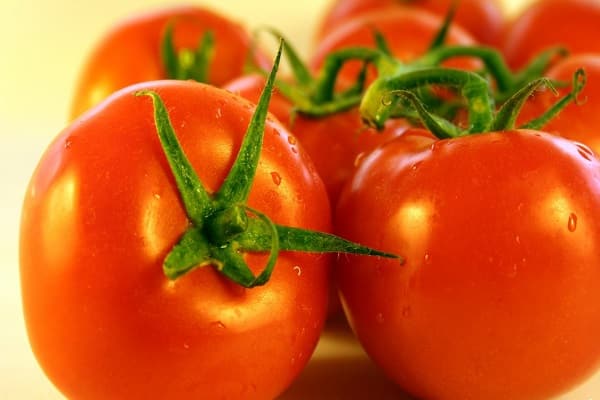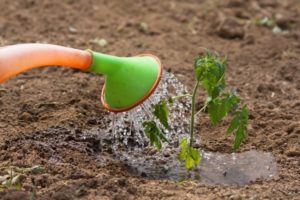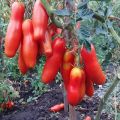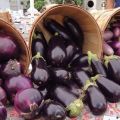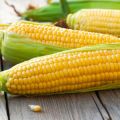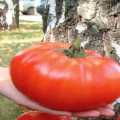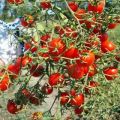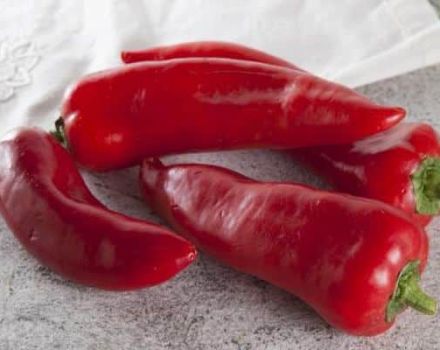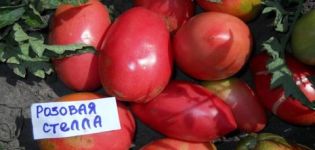Description of the tomato variety Russian Happiness, features of cultivation and care
Tomato Happiness Russian f1 is a variety of hybrid origin, endowed with high productivity and resistance to most tomato diseases. The tomato is grown indoors. What other features does this variety have, and should you expect good luck from growing it?
Feature and Description
Indeterminate hybrid variety. The growing season lasts 110-115 days. Plant height reaches 2 m. The bush is powerful, well leafy. The root system is massive. The leaf plates of the usual form for tomatoes are slightly wrinkled, dark green.
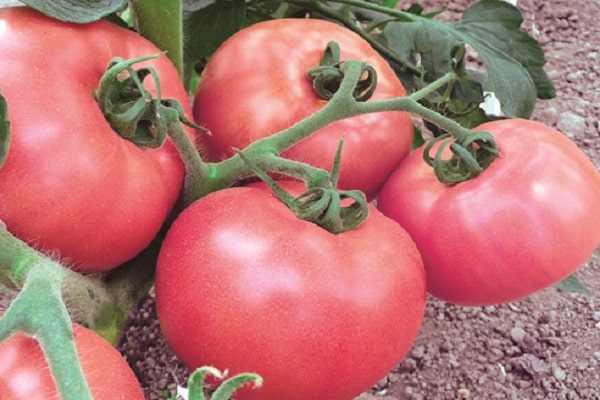
Simple inflorescences begin to form above 7–8 leaves and form after 1–2 leaves. Tomato Russian Happiness is resistant to dangerous diseases of the tomato: fusarium, verticillium, mosaic, alternaria. In 2010, the hybrid was included in the State Register of the Russian Federation as a variety intended for cultivation in film and polycarbonate greenhouses. With proper care, the yield of the variety is 7.2–9 kg of fruits per square meter. m.
Description of fruits:
- The shape is rounded, flattened in the lower and upper parts, medium silvery.
- Weight - 300 g.
- In technical ripeness, tomatoes are light green, in biological ripeness, pink. There is no green spot around the stalk.
- The skin is firm, dense, not pubescent.
- The core is fleshy, juicy. The number of seed chambers varies from 4 to 6. There are many seeds.
- The taste is sweet, rich.

Due to their dense structure, tomatoes are well tolerated over long distances and are stored for a long time. The fruits are used for the preparation of salads and snacks, juices and pastes. Best of all, the hybrid bears fruit when keeping a bush of 1–2 stems.
Generally speaking, the characteristic and description of the variety consists of the following advantages:
- high productivity;
- good immunity;
- pleasant taste and good presentation of fruits;
- short internodes;
- long shelf life.
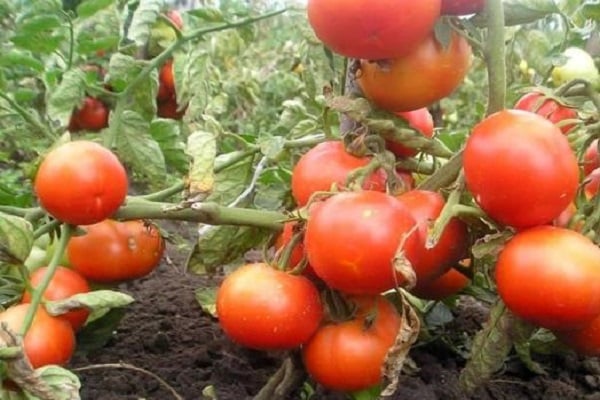
Thanks to the work of breeders, this species has no disadvantages. Therefore, the variety is suitable for cultivation both in private households and in industrial enterprises.
Features of growing and care
Seeds for seedlings are sown in separate or large containers in mid-March. At a temperature of + 23–25 ⁰С, the sprouts appear on the surface 3-5 days after sowing. To prevent the plants from stretching, the temperature in the room with young plants is reduced to 18–20 ⁰С.
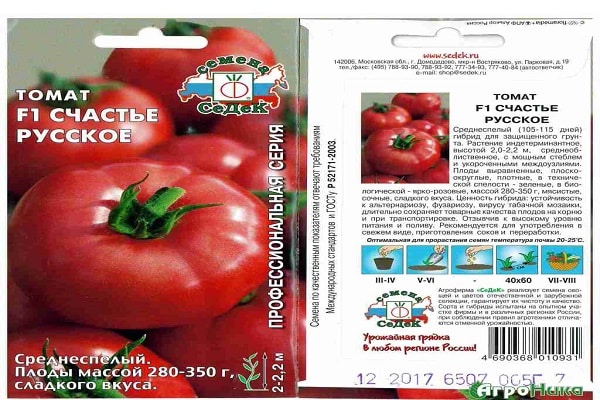
Tomatoes are transplanted into separate cups after the formation of 2 true leaves, and 5–6 into the greenhouse. 3-4 plants are planted on one square meter. Caring for a tomato consists of simple garden manipulations, such as:
- Watering. Unlike other tomato varieties Russian Happiness is picky about watering.Bushes that grow in dry soil do not set fruit well or at all. Therefore, the soil should be moderately moist during the flowering period. The rest of the time, watering is applied 1-2 times a week. Despite the plant's love for moisture, it is impossible to turn a garden bed into a swamp - this is fraught with root rot and the onset of fungal diseases.
- Top dressing. Fertilizers are applied 3-4 times per season. Organic solutions and mineral fertilizers are used as nutrient mixtures.
- Shaping and garter. Bushes lead in 1 or 2 stems. A week after planting in a permanent place, the plants are tied to pegs or twines.
- Loosening and weeding. Even the best performance can be spoiled by the lack of these manipulations. Weeds are pulled out as they emerge, and the soil is loosened after watering and rain.
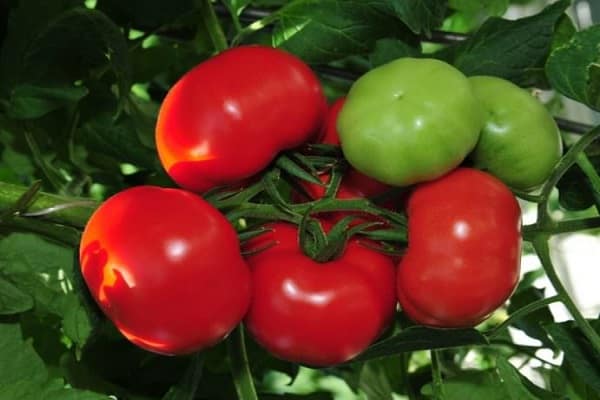
As you can see, it is very easy to get a bountiful harvest from a plant. All that is needed for the maximum number of fruits to set on the plants is to take into account the characteristics and requirements of the hybrid.
Reviews
The opinions of gardeners about the tomato Russian happiness is only positive. Vegetable growers express admiration for the high yield, excellent presentation and taste of the fruit. Many gardeners grow a hybrid from year to year.
Have you grown the Russian f1 cultivar? How many kilograms of fruit were harvested from one plant? Please leave feedback so that those who still have doubts about the choice can evaluate the pros and cons of the hybrid. Attach a photo if possible.
